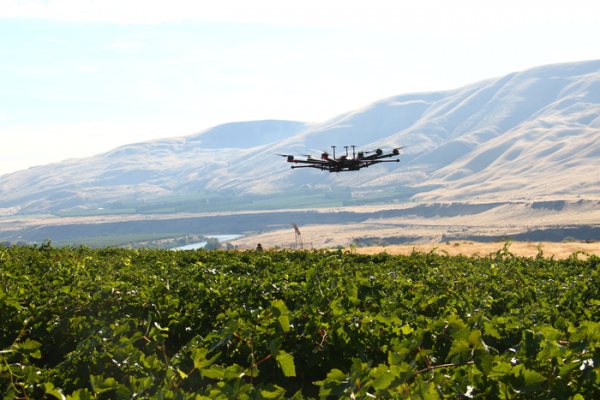In the future, cameras could spot blackbirds feeding on grapes in a vineyard and launch drones to drive off the avian irritants, then return to watch for the next invading flock. All without a human nearby.
A Washington State University research team has developed just such a system, which they detail in a study published in the journal Computer and Electronics in Agriculture. The system is designed to have automated drones available to patrol 24 hours a day to deter pest birds, like European starlings or crows, that cost growers millions of dollars a year in stolen or ruined fruit.
“Growers don’t really have a good tool they can rely on for deterring pest birds at an affordable price,” said Manoj Karkee, associate professor in WSU’s Department of Biological Systems Engineering and the study’s corresponding author. “With further refinement and industry partnerships, this system could work.”
For the study, the team ran two separate tests: detecting birds and deploying drones automatically. Over a few years, Karkee’s team developed a camera system and algorithm that would find birds and count them as they flew in and out of fields.
Read more at Washington State University
Image: A manually operated WSU drone flies over a vineyard during tests for bird deterrence and fruit damage assessment. (Credit: WSU Agricultural Automation and Robotics Lab)


